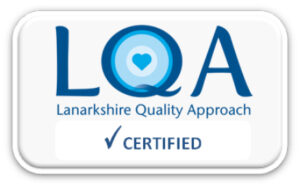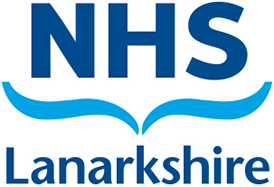Jejunostomy Feeding Guide
Information for patients
NHS Lanarkshire Nutrition and Dietetic Department
PIL.JEJUNO.60744.L
Jejunostomy Feeding
You are currently unable to take enough food and fluid by mouth to meet your nutritional requirements or you may be unable to take any food or fluids orally at all. The jejunostomy feeding tube will enable you to meet your nutritional requirements by feeding you directly into the jejunum (small bowel).
A jejunostomy feeding tube can be used if you no longer have a functioning stomach, are experiencing problems feeding into your stomach or are at risk of pulmonary aspiration.
Jejunostomy feeding is a method of giving you nutrition via a tube directly into your jejunum through a feeding tube called a jejunostomy feeding tube. This can be inserted surgically.
Care of the Jejunostomy Tube
Effective care of your tube is vital for your well being. The aim is to prevent tube blockage.
To prevent your tube getting blocked it is important to flush with 30 – 60mls cooled boiled water before and after your feed and four-six hourly when you are not feeding.
If you give medication down your tube it must preferably be in a liquid or dispersible form, please discuss this with your pharmacist. Always check that your medication can be given by the jejunal route by contacting your pharmacist. And remember to flush your tube before and after medication with 30 – 50 mls cooled boiled water.
If several medications are going down the tube, flush with 5 -10mls cooled boiled water between each one.
If this fails to unblock your tube contact your district nurse, doctor or healthcare professional.
Care of the Jejunostomy Tube
Daily care:
- Hygiene is of the up most importance as the tube is in the small bowel. Clean stoma site avoiding disturbing sutures with mild soap and water and ensure adequate drying, also renew dressing as required.
- Observe the stoma site daily for any leakage, swelling, redness or irritation and report any changes to your healthcare professional. Some clear fluid may be present and this is normal.
- Continue to observe stoma site checking sutures are intact and report any problems to your health care professional.
- Do not rotate or advance tube to avoid displacement.
- Do not put anything down the tube other than feed, water and medications in liquid form.
- Flush the tube with 60mls cooled boiled water every four to six hours when not using the tube to prevent the tube from blocking.
Trouble Shooting Guide
| Problem | Possible Cause | Solution |
|
Tube will not flush. |
|
If all of the above are unsuccessful contact your feeding company nurse or health professional. |
|
GI problems e.g. nausea and vomiting Diahorrea. Constipation. |
|
|
|
Gastric Reflux |
|
|
|
If feeding tube comes out or dislodged. |
Contact your health professional to arrange for readmission to have tube re-inserted. |
Instructions on using your syringe
- The syringes you have been given can be reused for up to seven days.
- Clean your syringe straight after use
- Fill a bowl with hot soapy water
- Clean the end of the syringe by drawing the water in and out through the syringe until all traces of food or medicine are removed from the tip.
- Separate the two parts of the syringe and wash them.
- Then rinse them in water under the cold tap.
- Shake off the excess water and dry with a clean paper towel. Tapping the end of the syringe on a clean paper towel will dislodge any water that maybe still in the tip of the syringe.
- Store the syringe, still separated in a clean dry container.
- Put the syringe back together when you need to use it.
- You will usually be given one syringe for medicine and one for flushing cooled boiled water through your tube
- If while you are using your syringe it becomes stiff or difficult to use, or if you can see any damage to the syringe or the markings become unclear you should throw it away and start to use a new one.
Pub. date: June 2020
Review date: June 2022
Issue No: 02
Reference: PIL.JEJUNO.60744.L
21_04461
If you need this information in another language or format, please e-mail:




